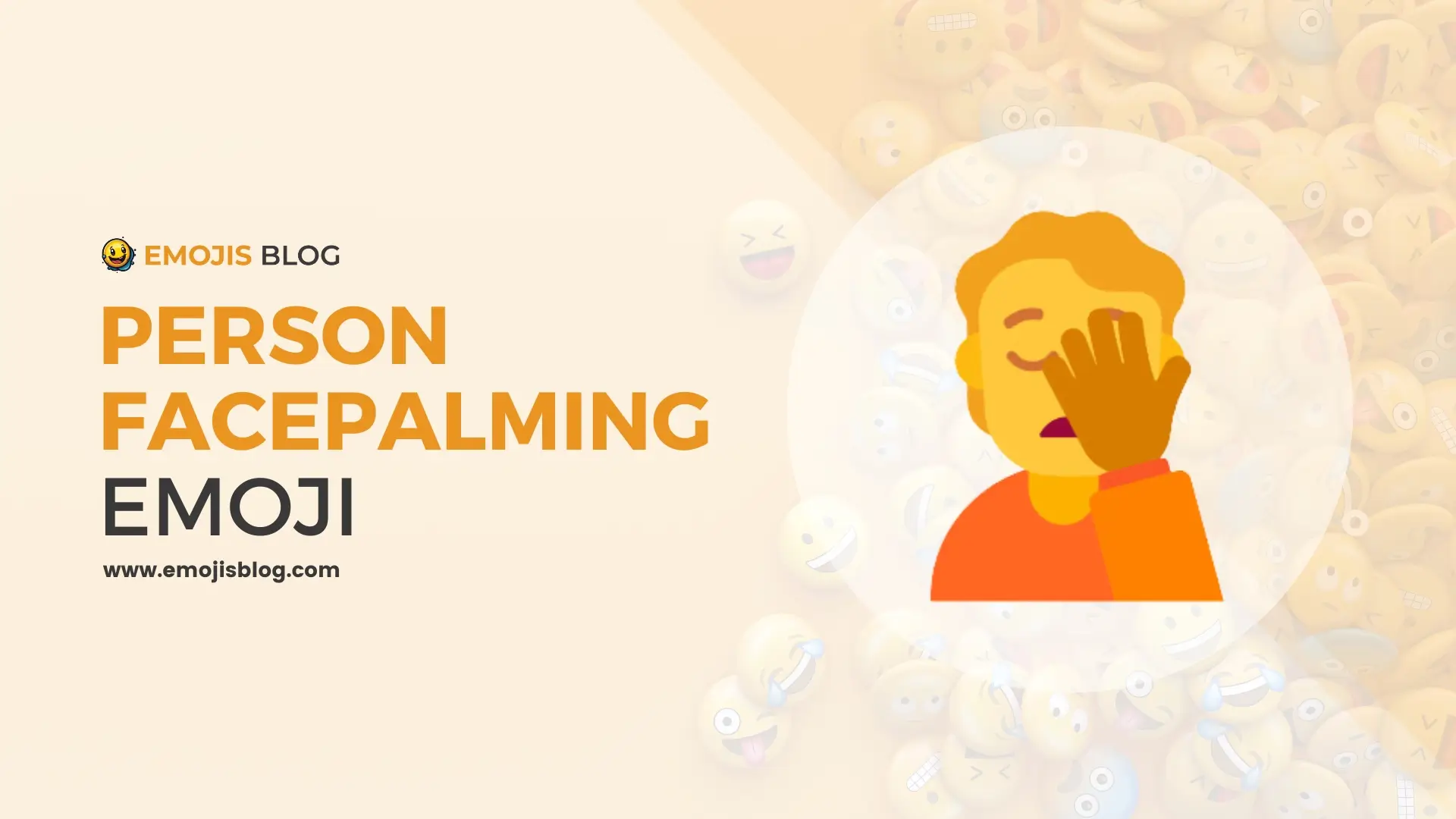What Does The Person Facepalming Emoji Mean 🤦
🤦
Person Facepalming Emoji Meanings 🤦
The facepalming emoji, 🤦, depicts a person placing one hand over their face, typically expressing frustration, embarrassment, or exasperation. This gesture conveys a sense of disbelief or dismay, often in reaction to an absurd or disappointing situation. Widely used in digital communication, it helps to visually emphasize emotions that text alone might not fully capture. Variations in design across different platforms and options for gender and skin tone customization enhance its versatility and relatability, making it a popular choice for conveying complex emotional responses succinctly.
Technical Information
| Attribute | Details |
|---|---|
| Emoji | 🤦 |
| Unicode Name | Person Facepalming |
| Unicode Version | 9.0 |
| Codepoint | U+1F926 |
| Shortcodes | :facepalm:, :man_facepalming:, :woman_facepalming: |
| Description | A person with one hand on their face, showing frustration or embarrassment |
| Introduced | June 2016 |
| Variations | Gender-specific (man and woman), multiple skin tones |
| Related Emojis | 🤷 (shrug), 🙄 (face with rolling eyes), 😩 (weary face) |
| Common Uses | Expressing frustration, embarrassment, disbelief, disappointment |
| Platforms | Available on all major platforms (iOS, Android, Windows, macOS, etc.) |
The Meaning and Usage of the Facepalming Emoji 🤦
The facepalming emoji, 🤦, is a widely recognized symbol in digital communication. Its usage spans various contexts and platforms, but it generally conveys a sense of frustration, embarrassment, or exasperation. This article explores the origins, meanings, and contexts in which the facepalming emoji is used.
Origins of the Facepalming Emoji
The facepalming gesture itself is not a modern invention. It has been depicted in art, literature, and popular culture for centuries as a universal sign of disbelief or frustration. The gesture involves placing one’s hand on the forehead, often covering the eyes, to express exasperation or disappointment.
The emoji representation of this gesture was added to Unicode 9.0 in 2016. The Unicode Consortium, the organization responsible for standardizing characters across digital platforms, included the facepalming emoji to reflect the growing need for symbols that represent human emotions and reactions more accurately.
Visual Representation
The facepalming emoji depicts a person with one hand covering their face. Different platforms may have slight variations in design, but the core gesture remains consistent. Typically, the emoji shows:
- A person with a neutral or slightly frowning expression.
- One hand covering the forehead or eyes.
- Often, the hand is depicted in a way that conveys motion, emphasizing the act of facepalming.
The emoji can be presented with different genders and skin tones, providing users with the ability to customize the emoji to reflect their own identity or preference.
Common Meanings and Interpretations
The facepalming emoji is versatile and can convey several emotions and reactions:
- Frustration or Exasperation: Often used when someone is overwhelmed or fed up with a situation.
- Embarrassment: Suitable for moments when someone feels ashamed or humiliated, either personally or vicariously.
- Disbelief or Shock: Used when encountering something absurd or hard to believe.
- Regret or Disappointment: Expresses a sense of regret or disappointment over an action or outcome.
Usage in Digital Communication
The facepalming emoji is prevalent across various digital platforms, including social media, messaging apps, and forums. Here are some common scenarios where the emoji might be used:
Social Media Posts
On platforms like Twitter, Instagram, and Facebook, users often include the facepalming emoji in posts to convey their reaction to news, events, or personal experiences. For example, a tweet about a frustrating day at work might include 🤦 to emphasize the user’s exasperation.
Text Messages
In personal messaging, the facepalming emoji helps convey emotions that might be difficult to express through text alone. It adds a layer of emotional nuance, making the message clearer to the recipient. For instance, a friend might use 🤦 when explaining a mistake they made, highlighting their embarrassment or regret.
Professional Communication
While less common, the facepalming emoji can appear in professional settings, particularly in informal communication channels like Slack or internal company chats. It can help lighten the tone or convey a shared sense of frustration over a project setback.
Cultural and Contextual Variations
The interpretation of the facepalming emoji can vary based on cultural and contextual factors. In some cultures, the facepalm gesture might have different connotations or be used less frequently. Additionally, the context in which the emoji is used can alter its meaning. For example, in a lighthearted conversation, 🤦 might be seen as humorous, whereas in a serious discussion, it could convey genuine frustration or disappointment.
The Impact of Emojis on Digital Communication
Emojis, including the facepalming emoji, play a significant role in enriching digital communication. They provide visual cues that enhance the emotional clarity of messages, bridging the gap between written and spoken language. Emojis like 🤦 allow users to express complex emotions succinctly, making interactions more engaging and relatable.
Conclusion
The facepalming emoji, 🤦, is a powerful tool in digital communication, encapsulating a range of emotions from frustration and embarrassment to disbelief and regret. Its widespread use across various platforms highlights its effectiveness in conveying nuanced reactions that words alone might struggle to express. As digital communication continues to evolve, emojis like 🤦 will remain integral in helping people connect and understand each other better.

